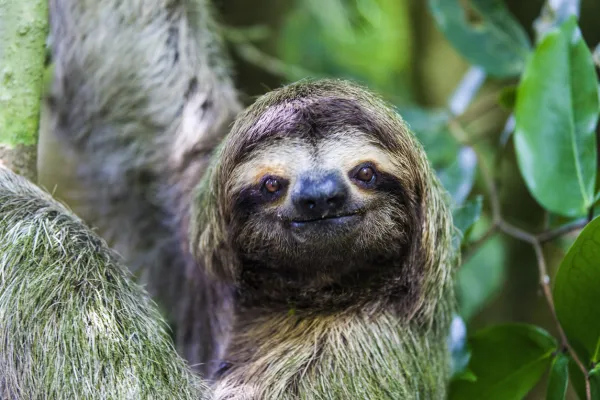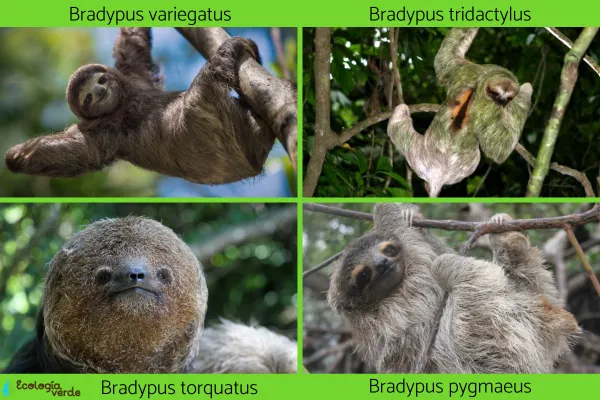When you hear the word “sloth,” chances are a slow-moving, gentle, and adorable tree-dwelling animal comes to mind. Sloths are among the most charismatic creatures in the animal kingdom. Their unique appearance and calm demeanor have made them popular worldwide—but this popularity can be both a blessing and a curse. While some people are tempted to keep sloths as pets, others contribute to conservation efforts to help protect them in the wild.
So, is the sloth endangered? In this article, we’ll explore the different species of sloths, their conservation statuses, the threats they face, and what we can do to protect them.

Sloths are tree-dwelling mammals of the genus Bradypus, commonly known as three-toed sloths. They are folivores, meaning their diet primarily consists of leaves, though they may occasionally eat buds or twigs. Their leaf-based diet is low in calories, which leads to an extremely slow metabolism and equally slow movement—hence their name.
All sloth species within the Bradypus genus are found in Central and South America, inhabiting rainforests and tropical woodlands.
There are four known species of three-toed sloths, each with different population sizes, geographic ranges, and conservation statuses:
Range: Found across Central and South America, from Nicaragua through Costa Rica and Panama to Colombia, Venezuela, Brazil, Ecuador, Peru, Bolivia, and Paraguay. Once found in Argentina, it is now considered extinct in that country.
Conservation Status: Listed as “Least Concern” by the IUCN.
Range: Native to the Amazon and Orinoco river basins in Brazil and Venezuela.
Conservation Status: Also listed as “Least Concern” by the IUCN.
Range: Endemic to only a few Brazilian states—Bahia, Espírito Santo, and Rio de Janeiro.
Conservation Status: Classified as “Vulnerable” with declining populations, according to the IUCN.
Range: Found only on Escudo de Veraguas Island off the coast of Panama.
Conservation Status: Critically Endangered. Its population is extremely small and decreasing.

While not all sloth species are currently endangered, several face serious threats. Even those listed as “Least Concern” are vulnerable due to the following risks:
Deforestation in Central and South America is the greatest threat to sloths. Sloths live in trees and depend on continuous forest canopies for food and shelter. As rainforests are cleared for agriculture, urbanization, and logging, sloths are forced to relocate—something they are not physically equipped to do quickly or safely. Even non-endangered species are at risk if their habitats disappear.
Rising global temperatures and shifting weather patterns caused by climate change are altering the ecosystems sloths rely on. These slow-moving animals are poorly adapted to environmental change and may not survive if forced to migrate to new, unfamiliar habitats.
Sloths are often captured illegally to be sold as exotic pets or, in rare cases, for their fur. Their calm temperament makes them an easy target for traffickers. Unfortunately, many sloths die during capture or transport, and those that survive often suffer poor living conditions.
Some species, like the Maned Sloth and Pygmy Sloth, have extremely limited geographic ranges and small populations. These factors increase the risk of inbreeding, reducing genetic diversity and making them more susceptible to disease, environmental changes, and extinction.
Though the challenges are significant, every individual can contribute to sloth conservation through simple actions:
Use public transport, conserve energy, and support renewable energy to help slow climate change and preserve natural habitats.
Do not support the exotic pet trade. Never buy or promote sloths as pets or purchase products made from their fur. Report any cases of illegal wildlife trafficking to local authorities.
Demand stronger environmental protection laws from your local and national governments. Protecting native forests helps preserve not just sloths, but thousands of other species.
Many nonprofit organizations work to rescue, rehabilitate, and reintroduce sloths to the wild. Donating—even a small amount—can help fund vital efforts, and many organizations accept donations from anywhere in the world.
Sloths are more than cute internet icons—they’re an essential part of the rainforest ecosystem. Protecting them means protecting biodiversity, combating climate change, and promoting sustainable development.
By staying informed and taking action, we can ensure a better future for all sloth species—especially those hanging on the edge of extinction.
Want to learn more? Explore our section on endangered animals to discover other species in need of protection and how you can help.
Referencias
Moraes-Barros, N., Chiarello, A. & Plese, T. 2014. Bradypus variegatus. The IUCN Red List of Threatened Species 2014: e.T3038A47437046. Disponible en: https://dx.doi.org/10.2305/IUCN.UK.2014-1.RLTS.T3038A47437046.en.
Chiarello, A. & Moraes-Barros, N. 2014. Bradypus tridactylus. The IUCN Red List of Threatened Species 2014: e.T3037A47436865. Disponible en: https://dx.doi.org/10.2305/IUCN.UK.2014-1.RLTS.T3037A47436865.en.
Chiarello, A. & Moraes-Barros, N. 2014. Bradypus torquatus. The IUCN Red List of Threatened Species 2014: e.T3036A47436575. Disponible en: https://dx.doi.org/10.2305/IUCN.UK.2014-1.RLTS.T3036A47436575.en.
Voirin, B., Smith, D., Chiarello, A. & Moraes-Barros, N. 2014. Bradypus pygmaeus. The IUCN Red List of Threatened Species 2014: e.T61925A47444229. Disponible en: https://dx.doi.org/10.2305/IUCN.UK.2014-1.RLTS.T61925A47444229.en.
Bibliografía
de Moraes-Barros, N., Silva, J. A., Miyaki, C. Y., & Morgante, J. S. (2006). Comparative phylogeography of the Atlantic forest endemic sloth (Bradypus torquatus) and the widespread three-toed sloth (Bradypus variegatus)(Bradypodidae, Xenarthra). Genetica, 126(1-2), 189-198.
animal tags: sloth
We created this article in conjunction with AI technology, then made sure it was fact-checked and edited by a Animals Top editor.